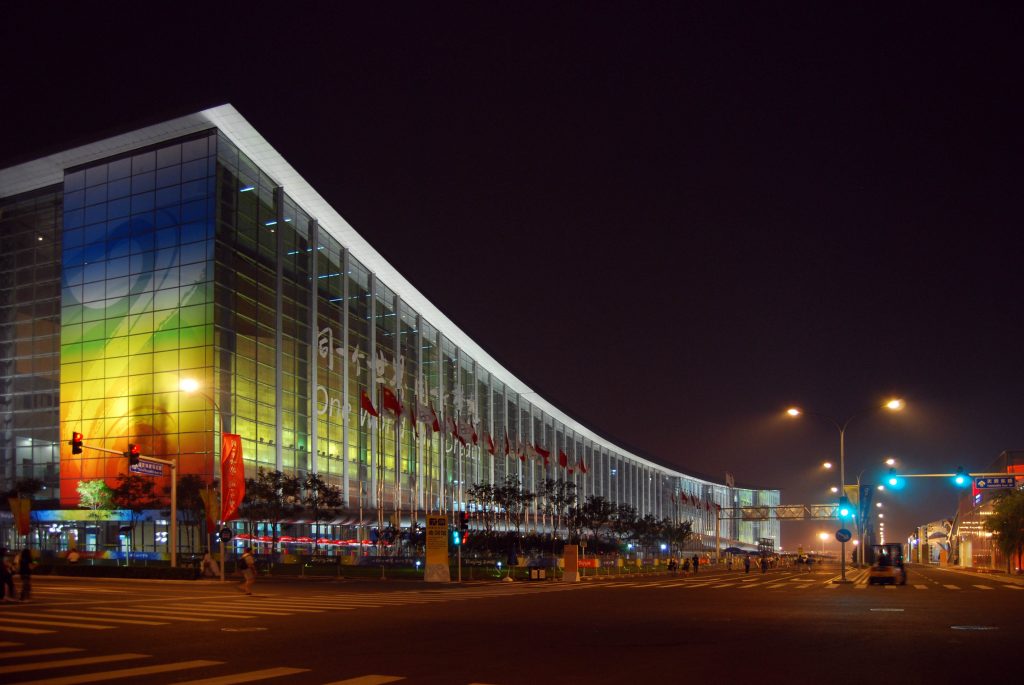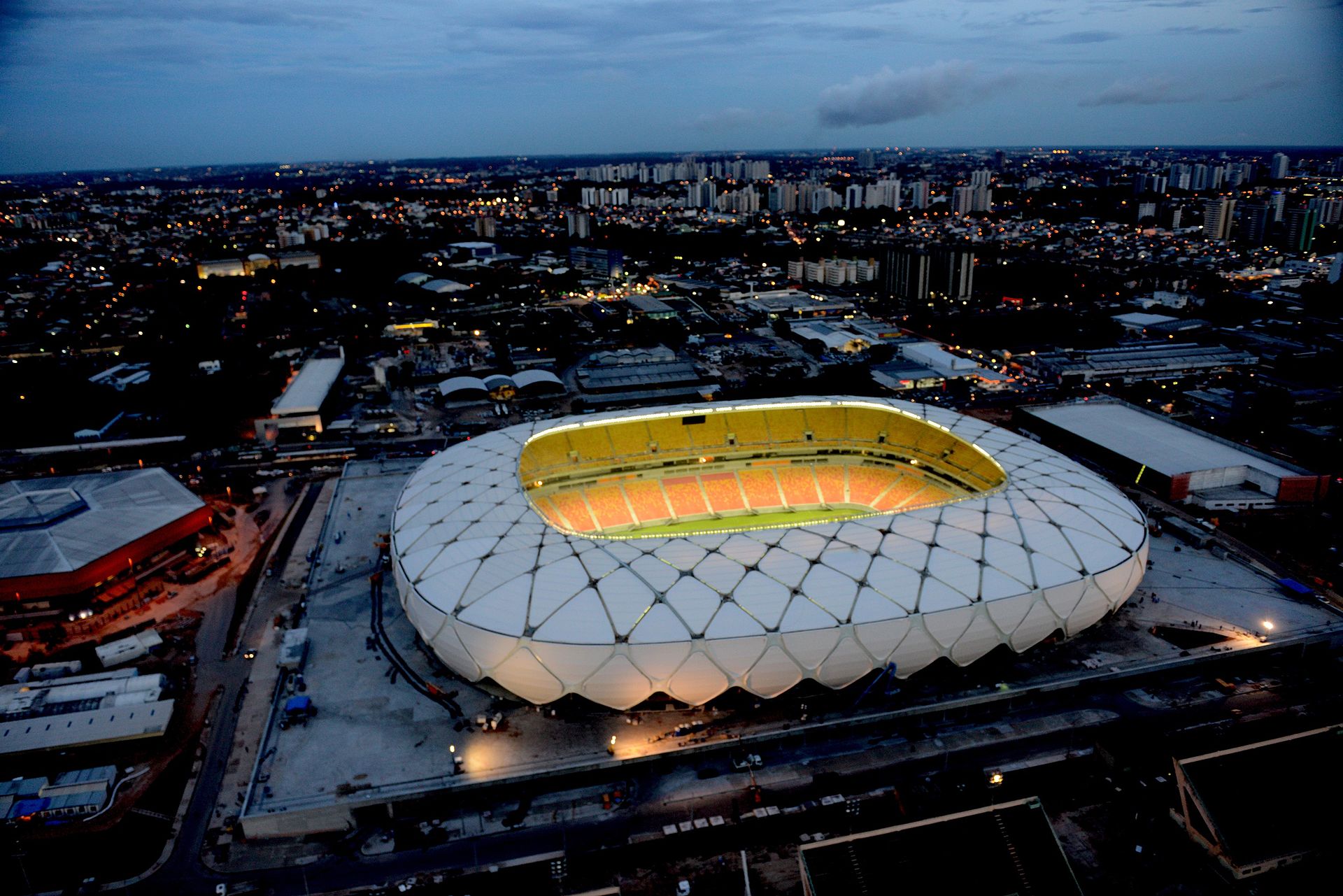Estimated reading time: 8 min
Even as the clamour around the 2016 Olympics in Rio de Janeiro builds, Brazil is facing a monumental challenge. South America’s largest economy faces the unenviable challenge of justifying the estimated $14 billion price tag of hosting the 2014 World Cup tournament. To do this, the country must find a second-life for the five football stadiums specially constructed for the tournament. At a total construction cost estimated at anywhere between $1.1 billion and $3.6 billion, the solution to this national predicament couldn’t come sooner.
Brazil’s Great White Elephant
Less than two years on from the World Cup, several of the stadiums built to host the tournament are falling into disrepair, draining money from a stalling economy and the sports teams involved with the venues. Upkeep costs have begun to outstrip any kind of income from ticket and merchandise sales while smaller crowds can affect morale and decrease a club’s overall value. Several of the stadiums were built in areas without a popular local professional team to justify their continued use post-tournament. Take the Estádio Nacional Mané Garrincha, for instance. Constructed in the capital Brasília for an eye-watering cost of around $900m, today the 72, 000 seat stadium is used as a bus station. The ‘Casa Futebol’ project proposed turning Brazil’s World Cup stadiums – including the Estádio Nacional de Brasília – into affordable housing. The project, however, has been met with significant resistance and the likelihood of it going forward is small, a crying shame in a country currently working its way out of a housing deficit.
When designed and constructed strategically, stadiums can be an integral source of income and pride to the local community. With increased box office revenue and income for the sports teams inhabiting it, tax revenues for the communities in which they’re built also increase. Brazil can not afford to let these great white monoliths sink into disrepair and obsoletion. It’s easy to get caught up in ‘World Cup fever’, but when designing something with such a narrow scope for practical post-cup applications, it’s important to keep one eye on the future.
 The Estádio Nacional Mané Garrincha in Brasília / Image courtesy of Brazilian Government by CC-BY 3.0 Br
The Estádio Nacional Mané Garrincha in Brasília / Image courtesy of Brazilian Government by CC-BY 3.0 Br
The boost of the 2014 World Cup and the upcoming 2016 Olympic Games could help offset the economic stagnation, but this ignores the long-term issue of just what can be done with these stadia. The Rio Olympics will offer some respite for the economy, but the majority of the stadiums will likely never see a major competition again; massive municipal burdens built on the backs of a nation where around 35% of the entire population lives in poverty. The only option to prevent these stadiums falling into disrepair and bleeding Brazil’s cities dry is to provide them with an alternative purpose now.
How do you future-proof a sports complex?
When designing a large sports complex, it’s vital the designers consider its future place in the landscape. Growing and long-standing sectors in the region, other upcoming projects in the surrounding area and impending changes to zoning laws can all have a dramatic effect on a project’s life expectancy. By factoring in the situation of the sports teams and athletes that will most frequently use the complex, designers can begin to build up a fuller picture of just how suitable their design is for that particular area.
In the design process itself, elements like the oft-derided retractable roof can actually ensure a longer lifespan and increase its propensity for multi-sport capabilities. Margaret Court in Melbourne Australia incorporated an overhanging roof to provide sun shade for patrons. In doing so, the designers provided added versatility by enabling the venue to double as a music and theatre venue, with theatrical equipment for indoor concerts capable of being hung from the overhang.
 Margaret Court in Melbourne, Australia before the renovation and addition of the roof overhang
Margaret Court in Melbourne, Australia before the renovation and addition of the roof overhang
Likewise, versatility was a key element in every stage of RMJM’s design process for the Beijing Olympic Green Centre. Originally created as one of the four key venues for the 2008 Beijing Olympics, the 375,000 m² complex was always intended to take on a post-Olympic role in China’s growing tourism industry. During the Games, the complex hosted the biggest media centre in Olympic history, as well as the Beijing Olympic Fencing & Modern Pentathlon Venues. After being renovated and reopened in November 2009, the CNCC held nearly 200 exhibitions, conferences, banquets and performances, with more than 100,000 delegates and thousands of exhibitors up to the 2010 Spring Festival. The venue was designed with adjustable walls and easily adaptable floor-space, with particular attention paid to ensuring it could function in as many roles as possible following the Olympic tournament.
The key difference between the China National Convention Centre and Brazil’s stadiums was that the Centre was designed with a post-tournament life in mind. Brazil’s World Cup stadiums, although designed with the capability to host multiple events, were not adaptable enough to meet the needs of the surrounding populace.
 The China National Convention Centre following the 2008 Olympic Games in Beijing
The China National Convention Centre following the 2008 Olympic Games in Beijing
Post-sport legacy
Not all sports complexes have to continue in the same sector when taking on a new life. In Barcelona, the Las Arenas once stood as a symbol of the city’s bullfighting legacy and Catalonian heritage. The decline in bullfighting led to the stadium being abandoned in the late 1970s, but the local council chose not to demolish it. Following extensive renovations, the stadium was repurposed as a shopping centre, providing the arena with a relevant purpose and infrastructure while maintaining its architectural heritage.
The World Cup stadiums of Brazil can go on to earn the country money once again, but they must utilise the potential of the surrounding community. The country must consider now what these cities need most, and respond quickly. A multi-million dollar albatross with little commercial value has no place in a developed nation, but in a country still struggling with unemployment and poverty, it’s yet another obstacle to achieving economic stability.
 The Plaza de Toros de las Arenas in Barcelona / Image courtesy of © José Luiz Bernardes Ribeiro /
The Plaza de Toros de las Arenas in Barcelona / Image courtesy of © José Luiz Bernardes Ribeiro /
Building for the environment, not the event
One of the most important considerations in stadium design is the surrounding cultural and economic context. Designing world class stadiums in cities largely made up of low-income areas and relatively little disposable income all but ensured certain stadiums would struggle to maintain a regular revenue while providing little in the way of real infrastructure. It’s not merely about how best to future-proof modern stadiums in Brazil, it’s also about ensuring they consistently serve the needs of those in the surrounding area.
The Arena da Amazônia, built in the jungle city of Manaus, was built specifically for the World Cup and cost a sizeable $300 million. Located hundreds of miles from the more populated areas of Brazil, and with no top league team, the stadium can’t even host local league games because it’s too expensive. The arena hosted just 11 events in the five months following the tournament. Maintenance costs almost outstrip the income earned from the stadium, meaning the arena could soon be costing the city money. The property tax revenue that could be earned from the land on which the stadiums are built is money that could help alleviate the socio-economic problems of the surrounding population.
 The Arena da Amazônia in Manaus, Brazil / Image courtesy of Governo do Brasil / CC-BY 3.0 BR
The Arena da Amazônia in Manaus, Brazil / Image courtesy of Governo do Brasil / CC-BY 3.0 BR
Whilst the China National Convention Centre was designed to adapt to the needs of the event, Brazil’s stadiums have suffered as a result of their inflexibility. Increasingly, sports venues are designed to be more adaptable to the size of an audience or a particular event. With this technology, venues can be downsized, altered and even transformed to fulfil an entirely new role altogether. This ensures stadiums are occupied more often and for longer periods, bringing in regular revenue and engaging with the community on more than one platform.
Sustainability
When designing large sports complexes, the challenge for designers is to develop facilities capable of embracing new innovations, anticipating the design elements of the future and leaving renovation open as an option. With the advent of BIM and intelligent data mapping, the potential for seamless integration with an existing structure is now possible, even to the point where structures can be renovated whilst the complex is still in use. By including passive energy saving technology such as solar panels, stormwater management and wind turbines in the design, Brazil could have harnessed the country’s tropical climate and massively reduced energy consumption, saving money during and after the tournament. In Taipei, the Kaohsiung National Stadium makes use of the sub-tropical climate with an entire solar-panelled façade. The panels covering the stadium generate most of the power required for its own operation, whilst providing additional power to the surrounding area on days when it is not in use.
Fundamentally, these stadiums need to serve the interests of the local community for more than just a few days a year. They must be designed to evolve to meet future and current needs, with a range of calculated elements responding to the changing economic, cultural and physical environment. It may be too late to truly impact on Brazil’s current crisis, but it’s vital every new development incorporates flexibility, investment and innovation to drive further investment and maintain a relevance long past the final whistle.



I cannot help but feel that these edifices stand as a reminder to the disenfranchised of their own miserable situation. The vaunted glory of man’s sporting achievements pales in significance when compared with the misery that it often bestows. As countless street urchins have wandered past the Pyramids or other such ‘wonders’, and pondered their betters, I wonder if things have actually changed.
The alleged nobility of mankind aside, it is nice to see how these ziggurats can be made to serve beyond their initial purpose – though my educated pessimism only suggests that those who need it most will not even witness the fringe benefits 🙁
Very well said. The intoxication of soccer fever and the desire to host the World Cup are so pervasive the country goes on a spending binge that causes them to be absolutely reckless with their citizen’s money AND their future. The future of soccer and other sports stadiums in is in a tremendous state of flux. Design and construction innovations that are far more practical are, for the most part, not being adopted because this myopic and overpowering fever is being transferred to other World Cup hosts like Russia, France, and Qatar.
The cities that have professional sport franchises in the U.S. are understandably balking at building sports stadiums that cost well over a billion dollars and become obsolete well within 20 years after their completion. A newer more modular and portable approach is in order so that playing fields AND stadium seats are moveable for different events.